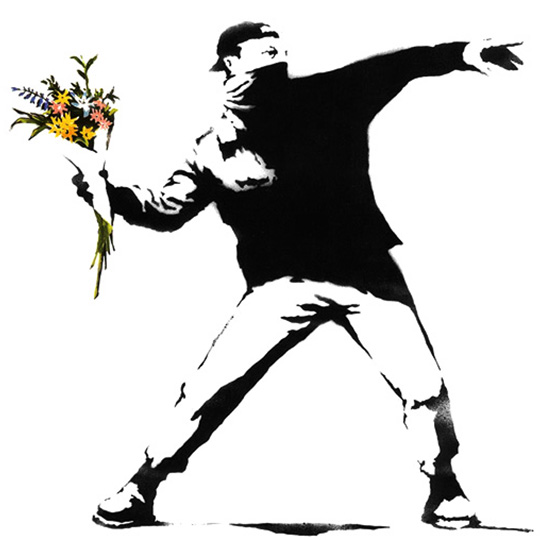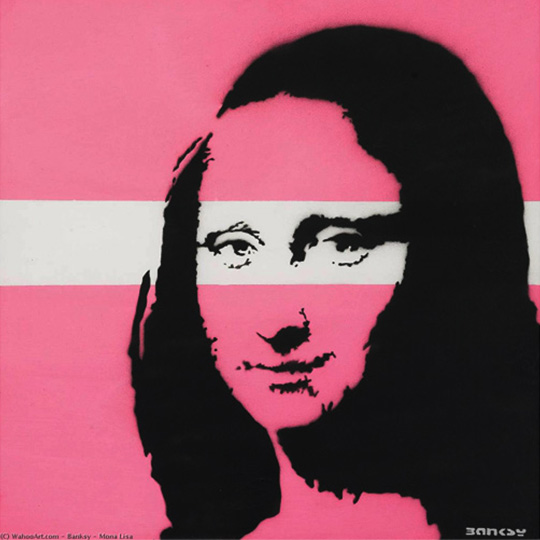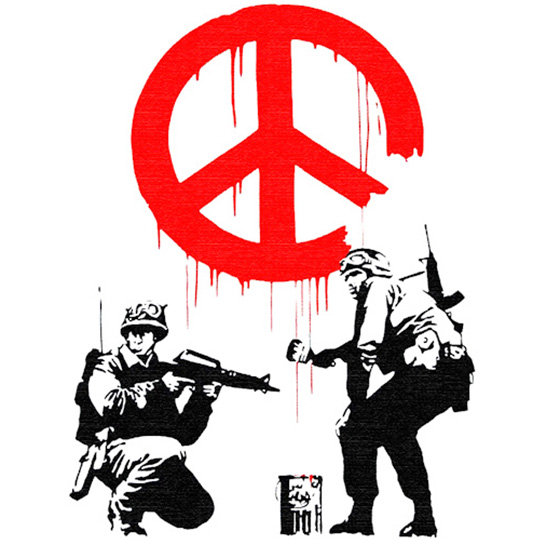
Alexander Nachkebia: "The idea that Banksy works only in the streets is a serious misconception"
A genius or a vandal, an artist or a businessman? The organizers of Banksy's first solo exhibition in Russia suggest everyone finds the answer themselves. The large-scale exhibition opened in June and made a lot of noise. While some attend the exhibition several times and really admire the artist's talent and the work of the organizers, others point to the excessive commercialization of the project (tickets are 550 rubles on weekdays, 650 on weekends and 1400 RUB with a VIP tour), which contradicts the very essence of street art. In the framework of Design Mate's topic of the month in July "Street culture and street art" we talked to the producer of the exhibition, Alexander Nachkebia, and asked him how the organization of the exhibition went and why the exhibition space is used exactly the way it is and not otherwise.
How did the organization of the exhibition go: how long did it take to prepare, do all the works in fact come from private collections, and did you deal directly with collectors?
The preparation process took about eight months. The idea appeared long ago, but there was no certainty that contemporary art would be in demand in Russia. Then I went to the exhibition of Murakami in the Garage, saw the lines of those wishing to see the art of the famous Japanese and realized that the potential was huge.
I've been in contact with private collectors – all told, the Moscow exhibition displays works from 30 private collections. Their main concerns were related to safety and security of the works, their first question being "How can I be sure that the exhibit will return to me?". Yet I managed to persuade many.

One of the elements of our exhibition is multimedia room, where we show visitors a short film about the Banksy's art. For six months a team of 15 designers were working on this film: they created 3D models of cities, processed images, and made Banksy's work "come to life". It turned out pretty cool.
Not all the exhibited work is original work, some of the pieces are reproductions. In conventional museums reproductions usually do not get displayed; are there some different laws that apply to street art?
The exhibition features around 100 objects – there's the original work on canvas, and the so-called prints, and posters from Banksy's solo exhibitions, souvenirs from his hotel, music album art, traffic signs, a door painted by the artist, banknotes and more. Some of the exhibits are our photos: we sent a special photographer, so he could shoot all the Banksy images that are still preserved on the walls of buildings in the UK. These photos were printed in huge size so the visitor gets a larger vision.
I am often asked why we do not display pieces of walls.
The fact is, we did not take the works not confirmed by certificates of authenticity, into our collection. Banksy has his own company that deals with the confirmation of the authenticity of his work, called Pest Control, and it rarely certifies his street work. We did not want to reduce the prestige of the exhibition by displaying questionable exhibits without confirmed authorship.
What you call reproductions, should be called prints. They exist in not single, but in limited editions, and their value on the market of contemporary art is also high. For example, the exhibition has a print of "Mona Lisa", which exists only in two copies. One of them is displayed in Moscow, the other was sold for £56 000 in 2006. Today its estimated price is €700 000. A series called "Kate moss" consisting of six prints number 17 (each print was made in 20 copies), and made in a very Andy-Warhol-ian spirit, is now estimated by the experts at £600 000. This series is also displayed at the exhibition.

The exhibits are mostly old and well-known Banksy. Was this done on purpose?
No, not on purpose; exhibited are the works that we were able to negotiate. It's just that many well-known works are in private collections, so their display is possible. It turned out well; it's a kind of an encyclopedia on the works of Banksy, and a quite large-scale representation of his work.
Tell us about the organization of space: why is everything decorated the way it is? What was the effect you wanted to achieve?
We wanted to transform the space of the Central House of the Artist, so we built artificial walls, painted them black. We gave separate attention to the lighting of the exhibition to let the viewer focus on the works themselves and to emphasize the mystery around the name of Banksy. The room with the Kate Moss prints turned out very well, our partners "Kaspersky Lab" were the ones taking care of its design.
Our general partner, MTS, takes credit for designing the hall in street aesthetics. Barrels, London phone booths, lounge ottomans – all of that was their idea. The exhibition is huge, so we have placed specially painted benches – so that visitors could relax, and of course, to create a street atmosphere. We even have street lamps there. The ticket-selling booth is also no accident – we brought it from St. Petersburg. Found this container in one of the alleys of the city, negotiated with the owner, repainted the box and brought to Moscow. In short, we've tried to arrange everything in unified aesthetics and, I think we succeeded.
You decided to combine the exhibition with Massive Attack's concert tour (there is a popular theory that behind the name of Banksy is none other than the founder of the band Massive Attack, Robert Del Naja – editor's note) that's a marketing ploy. But at the same time, for a very long time almost nothing was known about the exhibition – there was no direct advertising. How do people get to know about the exhibition?
When we planned the exhibition, there was no information available on Massive Attack performance yet. This was a coincidence, but also the last argument in favor of the exhibition to happen when at the final stage of the preparations we were whopped by doubts (the project is very costly and time- and effort-consuming).

Despite the lack of direct advertising, the show is very popular, sometimes we have about 6 000 visitors a day. In the first two weeks it was visited by over 65,000 people, this is a good turnout for a summer month. I think word of mouth works – people like the exhibition, some even come several times; there's a lot written about it in the press and on social media, too.
Does street art placed on a museum wall lose something - what do you think - or maybe, on the contrary, gains something?
The idea that Banksy works only in the streets is a serious misconception. He has long worked with museums and exhibits his art there, for example, his famous solo exhibition at the Bristol Museum in 2009 "Banksy VERSUS Bristol Museum". "Banksy" does not only mean street art, he's a contemporary artist who works with different material and is known for different projects. We should not reduce his work solely to the images on building walls.
Banksy is typically not a big fan of exhibitions, where his works are shown for money. How do you think he would have reacted to your project? I understand that you have not contacted him?
We haven't contacted Banksy, as all works have been borrowed from private collectors. Yes, as a rule, he is quite sharp about such shows, but he hasn't said anything about ours yet. We have invested a lot of work into this exhibition, tried to present his work in the most interesting and informative manner (for instance, we recorded a free two-hour audio guide in Russian and English), so I want to believe that our exhibition will appeal to him.

